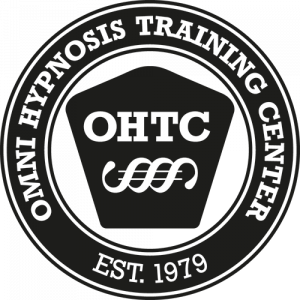
University of Zurich Publishes Paper With New Research Regarding Brain Connectivity Patterns During Hypnosis
"Investigating functional brain connectivity patterns associated with two hypnotic states": two different hypnotic states were made visible for the first time.
ZüRICH, SWITZERLAND, December 21, 2023 /EINPresswire.com/ -- OMNI Hypnosis International / Hypnose.NET GmbH launched the HypnoScience® project in 2018, aiming to better establish hypnosis/hypnotherapy in society and medicine. The research project „multimodal investigation of distinct hypnotic states“ was launched in cooperation with the University of Zurich. The now-published paper on the first of three studies, "Investigating functional brain connectivity patterns associated with two hypnotic states," provides robust and astonishing results on how the brain "deals" with hypnosis.Two different hypnotic states made visible
The study, conducted with 50 healthy and hypnosis-experienced subjects, demonstrates that hypnosis leads to specific changes in the functional connectivity of the brain. The results show that hypnosis is not only visible and measurable in the brain, but also indicate that at least two different hypnotic states exist (Somnambulism1 and the Esdaile-State2). This is the subject of controversial debate in the scientific community, and the results considerably expand our understanding of hypnosis. In addition, there is generally little consensus about the neural mechanisms of hypnosis - here, too, the study makes a valuable contribution and contributes to the discussion about which brain areas could be involved when a person is hypnotized.
Standardized and reproducible hypnosis inductions
The OMNI Hypnosis inductions, which are based on the hypnosis inductions by Dave Elman and Gerald Kein, were used to measure the two states. Our methods are precisely standardized and reproducible by anyone. All subjects were hypnotized with exactly the same words. The exact standardization also allowed the researchers to measure the two hypnotic states using a standardized control text and corresponding control states and compare them with each other. This underlines the importance of standardized procedures in the scientific study of hypnosis.
Similar patterns to Propofol and LSD
Interestingly, the subjects in Somnambulism (1) showed similar patterns in some areas of the brain to those in whom anesthesia was induced using Propofol. In hypnosis, however, you are fully aware at all times, so the states are not comparable. Propofol is said to have a relaxing and euphoric effect, a perception that is also often experienced in hypnosis.
In the Esdaile-State (2), the test subjects often reported altered body perception or a complete "decoupling" from the body. Apparently, these perceptions are associated with modified coupling mechanisms of the cortical somatosensory integration systems in the brain, as is often found in states of consciousness induced by LSD (and other drugs). The authors point out that further studies are needed to confirm this hypothesis.
1) Somnambulism: A deep state of hypnosis, which is a prerequisite for modern and uncovering hypnotherapy (Regression to Cause), as well as enabling pain-reduced sensations (hypno-analgesia), dental work, or pain-free birthing.
2) Esdaile State: A very deep state of profound hypnosis in which a mental euphoria can be experienced and, in addition to other exciting effects that have not yet been researched, a complete absence of pain is automatically achieved (hypno-anesthesia). The Esdaile state can be used in treating and managing burnout clients, in pain management, and in general recovery work. In addition, major surgical procedures can be performed without the use of pain medication or chemical anesthesia.
The study was published by Frontiers. In 2022, Frontiers was the 3rd most-cited publisher with an average of 5 citations for recent articles published. Link to the study: https://www.frontiersin.org/articles/10.3389/fnhum.2023.1286336/full
Further publications in preparation The research work is not yet complete with this publication. The EEG study has been submitted to CORTEX and can be viewed as a preprint (https://osf.io/preprints/psyarxiv/74sq3).
The MRS (Magnetic Resonance Spectroscopy) study, based on the findings of the fMRI results, has already been analyzed, and the manuscript will be available shortly.
For inquiries to OMNI Hypnosis International/Hypnose.NET GmbH, please contact:
Adrian Brüngger at +41 (0)79 215 83 48, bruengger@hypnose.net or Hansruedi Wipf +41 (0)79 261 78 42, wipf@hypnose.net.
For inquiries to the University of Zurich, please contact:
PD Dr. Philipp Stämpfli at +41(0)58 384 27 38, philipp.staempfli@bli.uzh.ch
Regina Westenthanner
westenthanner.media
email us here
Distribution channels: Education, Healthcare & Pharmaceuticals Industry, International Organizations, Science
Legal Disclaimer:
EIN Presswire provides this news content "as is" without warranty of any kind. We do not accept any responsibility or liability for the accuracy, content, images, videos, licenses, completeness, legality, or reliability of the information contained in this article. If you have any complaints or copyright issues related to this article, kindly contact the author above.
Submit your press release
